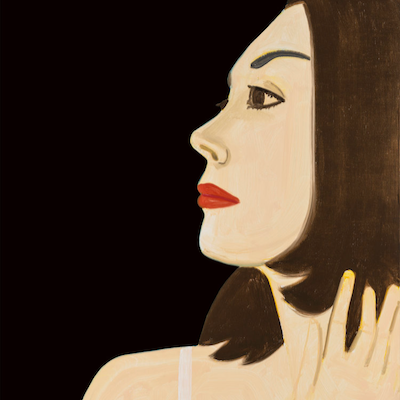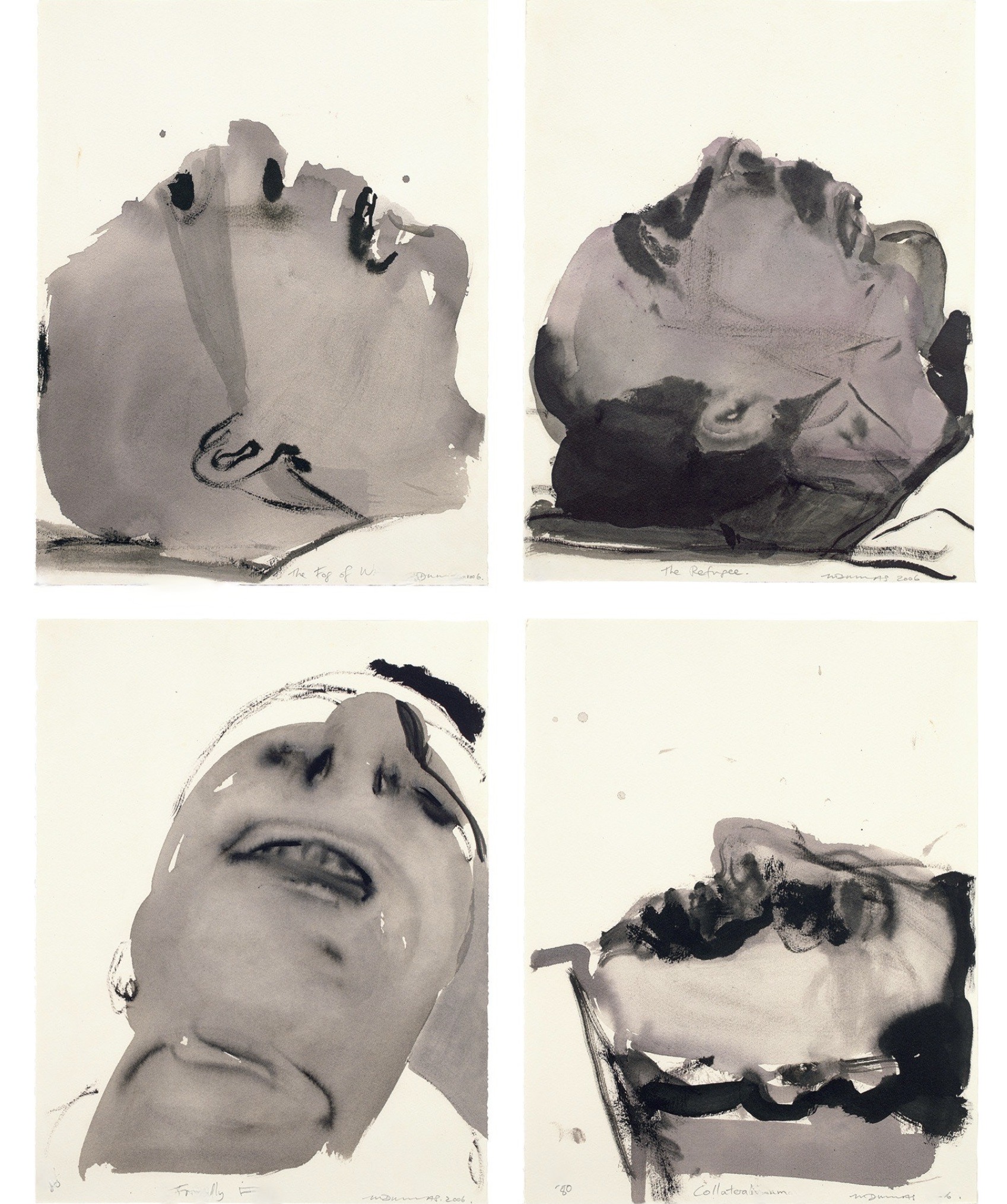


Details
Artist
Styles
The complete portfolio of four digital prints in colors including text by the artist, on Hahnemüle paper, the full sheets, all contained in the original heavy card folio - All signed, titled, dated, and numbered - Published by Marcel Kalksma, Amsterdam. - Including: The Fog of War; Collateral Damage; Friendly Fire; and The Refugee // The Fog of War by Marlene Dumas is a powerful portfolio of four digital prints created in 2006, each print capturing haunting, distorted portraits that convey deep emotional tension. The portfolio includes individual pieces titled The Fog of War, Collateral Damage, Friendly Fire, and The Refugee. Rendered in monochromatic tones on Hahnemühle paper, the compositions highlight Dumas’ skill in using minimalistic color and fluid brushstrokes to evoke visceral responses. Each face appears submerged or fragmented, reflecting themes of suffering, conflict, and the dehumanizing effects of war. Known for her exploration of identity and societal issues, Dumas uses these intense portraits to confront viewers with the psychological impacts of violence and displacement.
The Fog of War, 2006
form
Medium
Size
45.7 x 35.6 cm
- Inches
- Centimeters
Edition
Price
- USD
- EUR
- GBP
Details
Artist
Styles
The complete portfolio of four digital prints in colors including text by the artist, on Hahnemüle paper, the full sheets, all contained in the original heavy card folio - All signed, titled, dated, and numbered - Published by Marcel Kalksma, Amsterdam. - Including: The Fog of War; Collateral Damage; Friendly Fire; and The Refugee // The Fog of War by Marlene Dumas is a powerful portfolio of four digital prints created in 2006, each print capturing haunting, distorted portraits that convey deep emotional tension. The portfolio includes individual pieces titled The Fog of War, Collateral Damage, Friendly Fire, and The Refugee. Rendered in monochromatic tones on Hahnemühle paper, the compositions highlight Dumas’ skill in using minimalistic color and fluid brushstrokes to evoke visceral responses. Each face appears submerged or fragmented, reflecting themes of suffering, conflict, and the dehumanizing effects of war. Known for her exploration of identity and societal issues, Dumas uses these intense portraits to confront viewers with the psychological impacts of violence and displacement.
What is figurative art?
Sometimes known as Figurativism, figurative art refers to sculptures and paintings that are clearly or specifically derived from real objects, making them representational. The term figurative art is often used in contrast to abstract art. However, since the emergence of abstract art, figurative art has come to describe any form of modern art that has strong references to the real world or actual situations.











